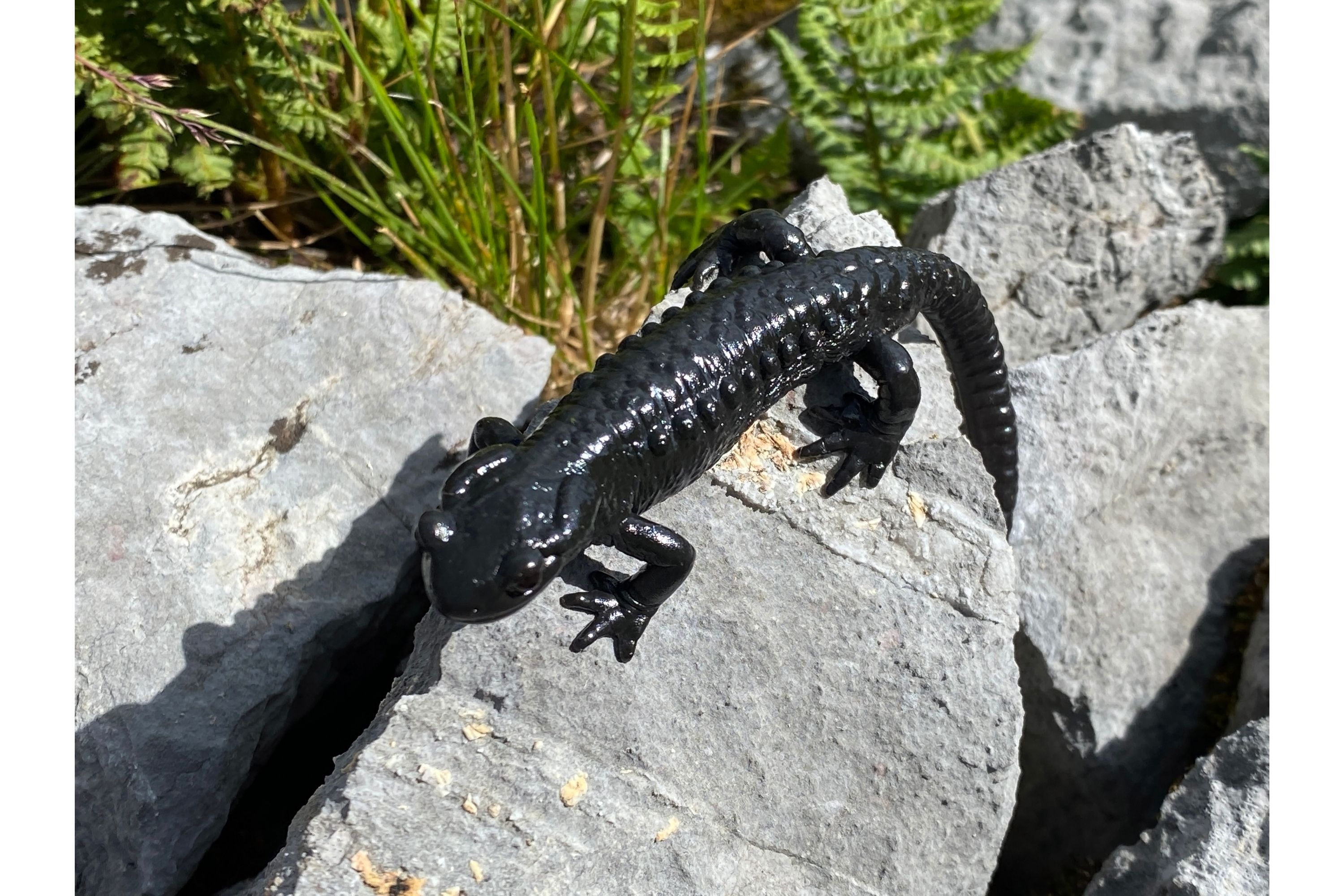Alpine salamander
(Salamandra atra)

Description
The alpine salamander (Salamandra atra) is a shiny black salamander found in the Alps from the Swiss-French border at the western end of its range through Austria to the Dinaric Alps at the eastern end of its range, at altitudes above 700 m (2,300 ft). The western Alps (in France and Italy) are inhabited by a similar species, Lanza's alpine salamander (Salamandra lanzai), in only one small area. No differences in length are seen between the sexes (9–14 cm (3.5–5.5 in)) and the sex ratio is 1:1. Their life expectancy is at least 10 years. Unlike other salamanders, whose larvae are developed in water, the alpine salamander is a fully terrestrial species. Capture-recapture methods suggest that the species is very stationary; 12 m (39 ft) was the maximum observed distance travelled by one individual during the summer season. About 120 individuals per hectare were counted in most suitable areas with >2000 individuals/ha also observed, suggesting that this rather cryptic species is quite abundant. Total length up to 144 mm for males, up to 151 mm for females. Slightly elongated head, with two large kidney-shaped paratoid glands. The body has 11-13 costal grooves on either side. The tail is square in cross-section. One double row of poison glands runs down the center of the back. One single row of poison glands runs along either side of the body onto the tail. Usually black or brown-black, but the subspecies Salamandra atra aurorae has a bright coloration on the head, back, and dorsal side of the extremities. This coloration can consist of continuous patches or be spotted or blotched. It can vary in color from whitish or yellow to greenish or gray. Males have a slightly more pronounced cloaca than females. Genetic analysis suggests that the Corsican fire salamander (Salamandra corsica) is the closest related species, and the black-yellow coloration is an ancestral feature of alpine salamanders. Proposed colonization from south (Prealps) to Alps was carried out by the fully melanistic (derived feature) S. a. atra after the last retreat of the ice sheets.
Taxonomic tree:







